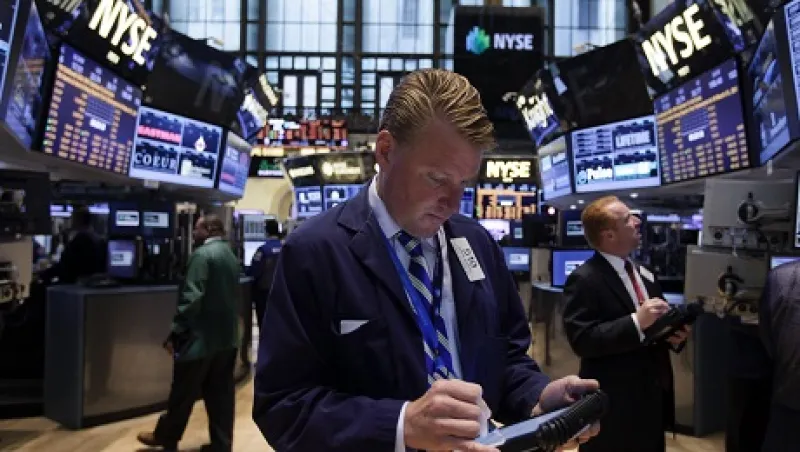In the latest issue of its popular quarterly letter, GMO took a stab at a question that has been asked countless times over the past two decades: Has the proliferation of passive investing disheveled the stock market?
Even as hundreds of billions of dollars have flowed into index funds, it’s “extremely difficult” to make conclusive statements about the impact of passive investing on markets, GMO says. But clients are still asking and, after revisiting and studying the topic, the $66 billion asset manager has some conclusions to share.
First, whatever level of impact passive investing has already had on markets, that impact is going to be less significant going forward, according to the quarterly letter authored by Ben Inker, co-head of GMO’s Asset Allocation team at GMO, and John Pease, a member of the same group.
One factor behind the growth of index funds has been investors saving for retirement through 401(k) plans. And that trend is changing.
For decades, assets invested for retirement in the U.S. have been shifting from defined benefit to defined contribution plans. Defined benefit plans (and annuities) have gone from having 82 percent of retirement assets in 1974 to 37 percent in 2023. Two-thirds of that remaining 37 percent are also in government sponsored plans, which tend not to be reallocated. In other words, the trend of more retirement assets ending up in DC plans — which usually invest those assets in passive funds for their liquidity and low costs — has effectively passed. The mix of DC and DB assets isn’t likely to shift like it has over recent decades so future passive flows and the impact will be muted, GMO explained.
“The transition to defined contribution is coming to an end,” the letter says. “While passive may continue to grow as a fraction of assets outside the pension arena, the profound incentive shift that occurs when assets move from defined benefit to defined contribution is absent.”
While the increasing share of passive might have intensified some features of today’s markets, GMO says the effect has been “overblown.” However, it's not negligible.
Passive investing has not made markets less efficient, GMO argues, because these investors are inherent price takers. Index funds buy and sell shares based largely on the cash flows of defined contribution assets, which workers adjust programmatically. And this happens regardless of the prevailing stock prices in the market.
“If Nvidia has a blow-out quarter or disappoints dreadfully, an index fund’s opinion of it does not change. Any change in Nvidia’s share price that is driven by news relevant to Nvidia is driven by active investors. Whether they are traditional long-only managers, multi-strategy pod shops, high-frequency market makers, or retail day traders, any investor who changes their mind about the price they are willing to pay for a share of Nvidia in response to information is definitionally active,” GMO says.
One effect that money flowing into index funds might have had on markets is artificially pushing up the prices of mega-cap stocks. However, if that is the case, those stocks are overvalued, their future returns will be sub-par and “any effect was likely quite small,” according to GMO. “The primary driver of the enormous market caps of the Magnificent Seven (Spectacular Six? Fabulous Five?) is – drum roll – the enormity of their [earnings per share] growth,” the letter says.
The previous, lengthy bull market was favorable for passive funds, which in turn were blamed for the underperformance of value and small cap companies. GMO empathizes with this in the quarterly letter: “It is natural for passive investing to be touted as an explanation for the long winter of small caps and value stocks. For small companies, it is sufficient to note that the most popular passive funds generally don’t contemplate the broad equity market. The smaller you are, the larger the chance of your stock being ignored.”
But, again, GMO says passive investing isn’t the real culprit. In the case of value funds, they partly have to blame themselves.
“Though value-oriented funds have suffered greater outflows than either growth or core funds, it is hard to make the case that these flows were caused by the rise of passive investing…If the higher price-sensitivity of the holders of value stocks has led to them trading at too wide a discount to the market as money has moved to passive vehicles, value stocks will outperform in the future,” the letter explains. “Value companies look remarkably cheap today in comparison to the broad U.S. market, and passive has helped make them cheaper. Beyond that, their relative elasticity cuts both ways: while there are more willing sellers of value on the upside, there are equally more willing buyers of value on the downside.”
The evolution of the market as a result of inelastic, passive buyers also is creating new opportunities, GMO points out. Active managers able to time trades around passive flows can likely get illiquidity better than the competition and earn “a pretty (if not riskless) penny.” The sheer force of passive investing has also created or reinforced correlations in the market, which GMO says active managers like itself can capitalize on.
Assuming that passive investing helped pump the prices for mega-caps, or unjustly push down the prices for other stocks, future returns will be better for the undervalued stocks and worse for the overvalued ones.
“Passive has unquestionably changed the landscape of investing. But it hasn’t changed the math of investing, and at the end of the day it is the math that matters most,” GMO said.







